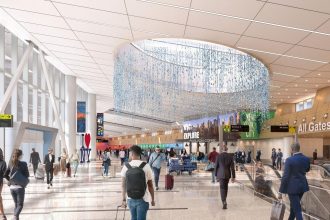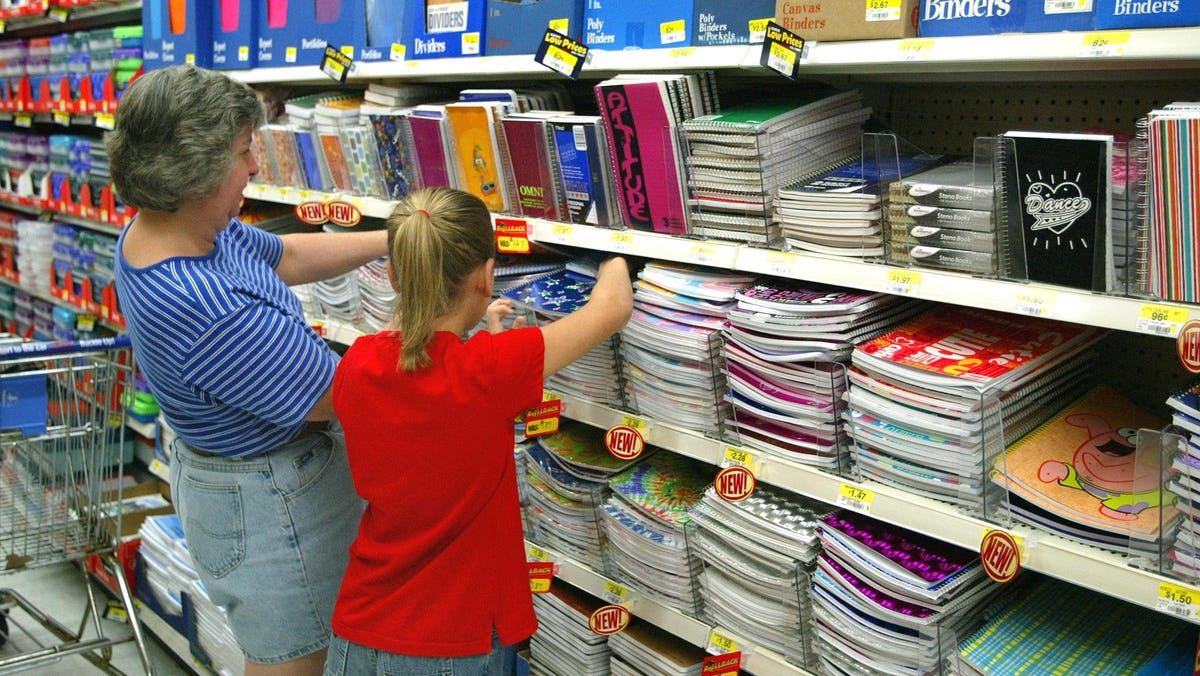Americans are expected to spend record amounts on back-to-school and back to college this year, and they plan to do most of that spending in physical stores.
Back-to-school shopping, the second biggest season of the year for retailers in terms of dollars spent, increasingly is becoming the most important opportunity of the year to draw shoppers into physical stores, and to create new customer relationships and strengthen existing ones.
Unlike holiday shopping, back-to-school purchases tend to be times when parents seek out an in-store experience where their children can see multiple options and participate in choosing their own backpack, lunch box, or first-day-of-class outfit. And when those shoppers are in stores, impulse purchases become more likely.
Retailers who invest in making back-to-school shopping a pleasant experience for parent and child will be the biggest winners this year, according to retail experts and analysts.
A retail ritual
“Parents want the BTS [back-to-school] experience of their kids picking out their backpack, and their pencil box, and their lunch box, and putting it in the cart – all as part of the rituals of school and getting them excited about the upcoming school year,” said Nikki Baird, a longtime retail analyst and vice president of strategy at Aptos
APT
“I think retailers should lean into enabling that experience more, rather than trying to bypass it,” Baird said.
The annual Back-to-School survey by shopper analytics and retail solutions provider Sensormatic Solutions found that 79% of consumers plan to do their back-to-school shopping in stores this year, up from 76% in 2022 and 2021.
Sensormatic Solutions, which helps retailers track store traffic, expects the peak back-to=school shopping period will begin this week and continue through August 26.
Most back-to-school surveys this year show consumers are less concerned about inflation than they were last year, and in the mood to spend.
$41.5 billion forecast
The most optimistic forecast, from the National Retail Federation, which bases its projections on consumers’ estimates of what they expect to spend, is predicting Americans will spend $41.5 billion for back-to-school items for grades K-12. That would be an increase of $4.6 billion, or more than 12%, over last year.
The NRF is expecting back-to-college spending to see a bigger increase, jumping $20 billion to a record $94 billion, mostly driven by more people buying big ticket electronics and dorm furnishing items for college students.
NRF Chief Economist Jack Kleinhenz, in a webinar on back-to-school spending last week, said the economy has been experiencing stronger than expected growth this year and that the outlook for the rest of the year is generally positive.
A ‘sturdy’ consumer
While federal measures to fight inflation are expected to result in a slowdown in spending, “we continue to see a sturdy consumer environment,” Kleinhenz said. Household finances “generally are healthy,” and consumers are spending because jobs and wages remain strong, he said.
Katherine Cullen, the NRF’s vice president of industry and consumer insights, said in the webinar that more purchases of big-ticket items will drive the expected surge in back-to-college spending.
Spending on electronics has not slowed down, post-pandemic, Cullen said, contrary to expectations. The percentage of back-to-school shoppers saying they plan to buy electronic items has grown dramatically over the past decade, Cullen said, rising to close to 70% this year.
The NRF bases its back-to-school forecast on the consumer survey it has been conducting annually with Prosper Insights and Analytics over the past two decades. This year’s survey included close to 8,000 consumers and was conducted between June 30 and July 6.
Consumers are adjusting to inflation by comparison shopping for deals, or trying lower-priced brands, but are not shifting to discount stores in the numbers they did during the 2008 recession, Cullen said.
Store visits up in June and July
Retail foot traffic analytics firm Placer.ai is seeing back-to-school shopping drive up visits to apparel chains, as well as at specialty retailers such as Staples and Best Buy
BBY
TGT
WMT
“Visits to the clothing category – and to its value-priced and children-oriented segments in particular – are up relative to this time last year. Leading superstore and wholesale chains and specialty electronics and office supply retailers are also seeing promoising visit trends,” Placer.ai’s back-to-school report states.
The Placer.ai report, however, contains a signal that amid the optimistic forecasts about back-to-school spending, a significant number of consumers are feeling financial pressures. Visits to Goodwill stores were up by double digits year-over-year throughout June and early July, according to Placer.ai
“
Katherine – record levels of expected spending on the part of consumers — been surveying for almost 20 years survey of 8,000 consume
up 13% bts
btc – much steeper growth – 1367. signig – increase 20 billion —- huge jump there –
the firs tdriver is what people are buying – more on electronics
more for dorm and apartment furnishings
other driver is that more people are buying them – increase in the percent of shoppers who are buying them this year –
the real story here is more around those big ticket items 43 % btc – say need more new items – 32% last year
fewer blaming higher spending on inflation
increadse in number saying they need big ticket BTC
BTC
consumrs feel that they’re able to find value, they simply believe they need more items for the seaosn
electronics – spending hasnt slowed since the end of the pandemic – increased demand for electronics during bts season
grown dramtically over the past decade to closer to 70%
people ae noticing higher prices – but have chagned how they respond to it — less brand and store loyalty
online and department stores top destination for shoppers but discount up to 45% for BTS and one-third for BTC
consumers are looking for value, they’re shopping around, but they’re not feeling pushed fully into discount channels
Read the full article here





